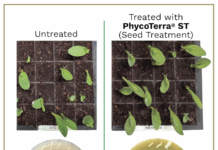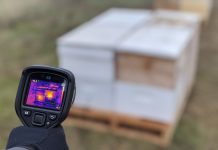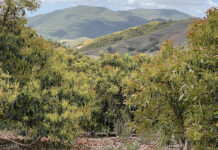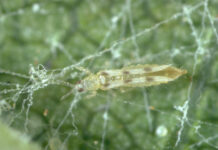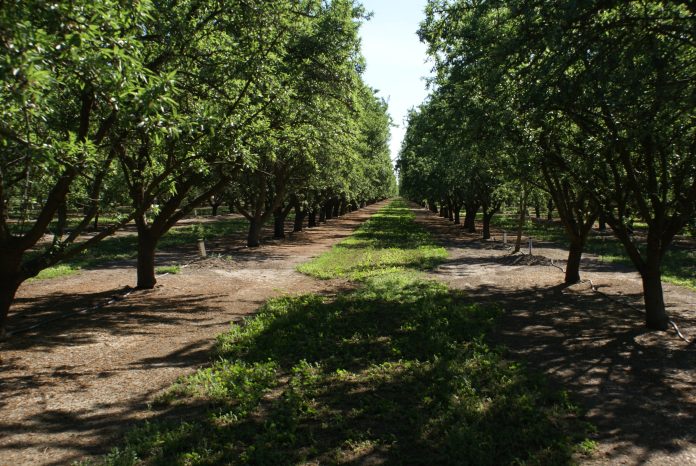
Development and introduction of new, high quality and disease-resistant cultivars in almonds, apricots, table and raisin grape varieties is the goal of USDA’s Crop Diseases, Pests and Genetics Research team in the Parlier research facility.
In its annual report, the team announced five-year goals to enhance breeding efficiency for table grape fruit quality and other priority traits by identifying associated molecular markers and through trials to determine their commercial use and map fruit traits related to flowering time, rachis structure and berry size. The research includes identifying sources of resistance and to develop molecular markers associated with resistance to Botrytis cinerea, powdery mildew and Pierce’s disease. Advanced table grape selections will be compared for production timing and fruit quality after cold storage with existing table grape cultivars.
Prunus development will focus on high-yielding, self-compatible almond varieties and glabrous-skinned or smooth skin apricot. Hybridizations will be performed to identify and select new almond varieties that are California adapted, early ripening and also have nonpareil-like kernel characteristics. Newly available glabrous skinned apricot accessions from Kyrgyzstan will be propagated when available from plant protective quarantine and used in hybridizations to assist with the breeding effort.
In almonds, hybridizations have been performed among self-fertile selections having nonpareil shaped kernels. A research-sized roller-cracker provides data on kernel durability at harvest. Multivariate kernel analyses are being used to identify new selections with nonpareil-shaped kernels.
Glabrous skin apricot imported to the U.S in the 1990s have been hybridized with California adapted apricots, but the initial crosses had no glabrous skin offspring. When the first generation was crossed amongst themselves, 25 percent of the offspring produced glabrous skin fruit. These crosses are being evaluated for fruit quality characteristics and ranked for use as parents. Fruit size and detrimental skin characteristics were listed as main concerns along with small fruit size. Neutral flavor skins predominate in apricots, but the glabrous skin apricots can exhibit both acidic and astringent skin flavors. Current fruit evaluations of the glabrous skin accessions will identify the largest fruited crosses having neutral skin flavor for use in planned crosses.
Agriculture Research Service researchers in Parlier have announced the release of a new early season table grape variety that has both exceptional eating quality and reduced cultural input needs. Solbrio has a large berry size, a crisp texture and full color. Many of the standard cultural practices used to enhance these characteristics in other table grape varieties are not necessary with Solbrio, ARS researchers report.





